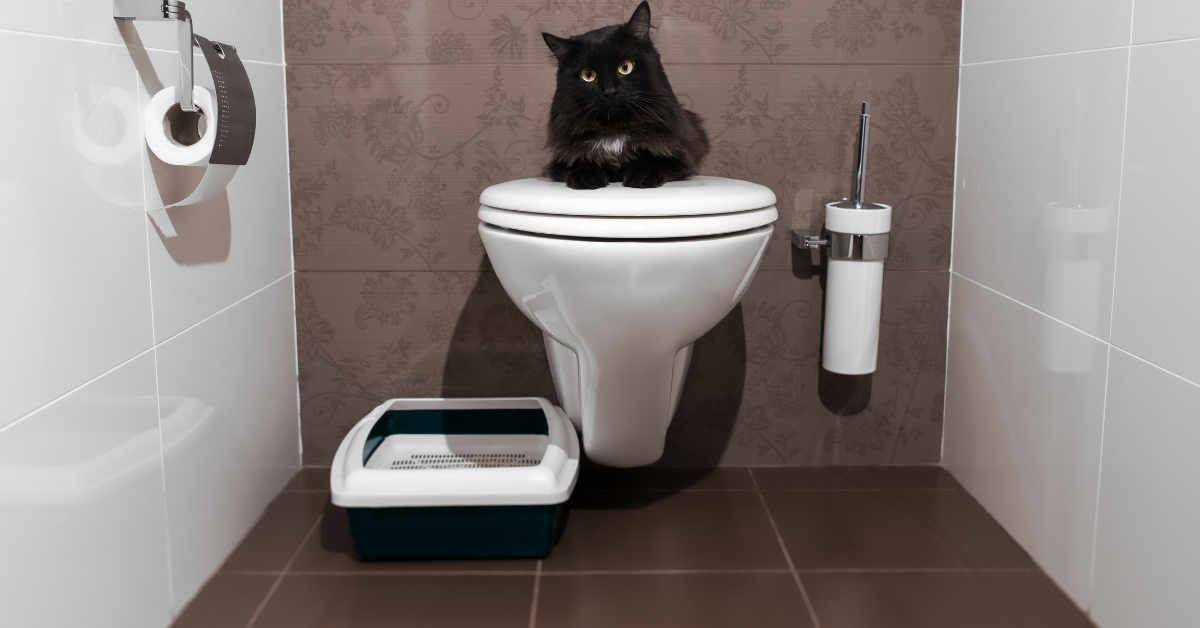Why Flushing Cat Poop Down Your Toilet Can Cause Problems - Tips for Safe Handling
Why Flushing Cat Poop Down Your Toilet Can Cause Problems - Tips for Safe Handling
Blog Article
The article in the next paragraphs in relation to How to Dispose of Cat Poop and Litter Without Plastic Bags is truly captivating. Don't miss out on it.

Introduction
As feline owners, it's important to bear in mind just how we take care of our feline close friends' waste. While it may seem hassle-free to purge pet cat poop down the commode, this technique can have destructive consequences for both the setting and human wellness.
Ecological Impact
Purging pet cat poop presents hazardous microorganisms and parasites right into the supply of water, presenting a substantial danger to water environments. These pollutants can adversely impact aquatic life and concession water high quality.
Health Risks
In addition to ecological problems, purging feline waste can likewise position health and wellness risks to human beings. Pet cat feces might consist of Toxoplasma gondii, a parasite that can create toxoplasmosis-- a possibly serious disease, specifically for expectant women and people with weakened body immune systems.
Alternatives to Flushing
Thankfully, there are more secure and extra accountable methods to throw away cat poop. Consider the following options:
1. Scoop and Dispose in Trash
The most common approach of taking care of feline poop is to scoop it into an eco-friendly bag and toss it in the trash. Make certain to utilize a dedicated clutter inside story and take care of the waste without delay.
2. Use Biodegradable Litter
Opt for eco-friendly feline litter made from materials such as corn or wheat. These clutters are eco-friendly and can be securely thrown away in the trash.
3. Hide in the Yard
If you have a backyard, think about hiding feline waste in a marked area far from vegetable yards and water resources. Make sure to dig deep adequate to avoid contamination of groundwater.
4. Install a Pet Waste Disposal System
Purchase a pet garbage disposal system specifically made for cat waste. These systems make use of enzymes to break down the waste, decreasing smell and environmental effect.
Conclusion
Accountable pet ownership expands beyond offering food and sanctuary-- it also includes correct waste management. By avoiding purging feline poop down the commode and selecting different disposal approaches, we can decrease our ecological footprint and safeguard human wellness.
Why Can’t I Flush Cat Poop?
It Spreads a Parasite
Cats are frequently infected with a parasite called toxoplasma gondii. The parasite causes an infection called toxoplasmosis. It is usually harmless to cats. The parasite only uses cat poop as a host for its eggs. Otherwise, the cat’s immune system usually keeps the infection at low enough levels to maintain its own health. But it does not stop the develop of eggs. These eggs are tiny and surprisingly tough. They may survive for a year before they begin to grow. But that’s the problem.
Our wastewater system is not designed to deal with toxoplasmosis eggs. Instead, most eggs will flush from your toilet into sewers and wastewater management plants. After the sewage is treated for many other harmful things in it, it is typically released into local rivers, lakes, or oceans. Here, the toxoplasmosis eggs can find new hosts, including starfish, crabs, otters, and many other wildlife. For many, this is a significant risk to their health. Toxoplasmosis can also end up infecting water sources that are important for agriculture, which means our deer, pigs, and sheep can get infected too.
Is There Risk to Humans?
There can be a risk to human life from flushing cat poop down the toilet. If you do so, the parasites from your cat’s poop can end up in shellfish, game animals, or livestock. If this meat is then served raw or undercooked, the people who eat it can get sick.
In fact, according to the CDC, 40 million people in the United States are infected with toxoplasma gondii. They get it from exposure to infected seafood, or from some kind of cat poop contamination, like drinking from a stream that is contaminated or touching anything that has come into contact with cat poop. That includes just cleaning a cat litter box.
Most people who get infected with these parasites will not develop any symptoms. However, for pregnant women or for those with compromised immune systems, the parasite can cause severe health problems.
How to Handle Cat Poop
The best way to handle cat poop is actually to clean the box more often. The eggs that the parasite sheds will not become active until one to five days after the cat poops. That means that if you clean daily, you’re much less likely to come into direct contact with infectious eggs.
That said, always dispose of cat poop in the garbage and not down the toilet. Wash your hands before and after you clean the litter box, and bring the bag of poop right outside to your garbage bins.
https://trenchlesssolutionsusa.com/why-cant-i-flush-cat-poop/

Do you appreciate reading about Don’t flush cat feces down the toilet? Try leaving a comment further down. We will be delighted to find out your views about this blog entry. Hoping to see you back again before long. Are you aware of anybody else who is in the market for the subject? Why not share it. Thank you so much for taking the time to read it.
Call Today Report this page